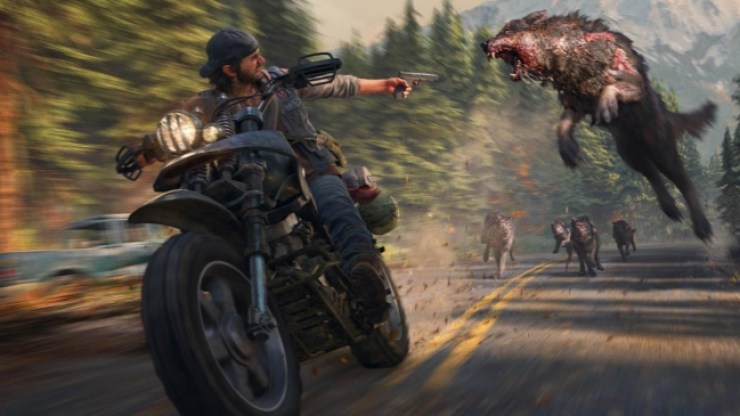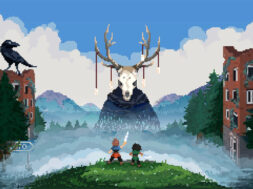In spite of that initial and riotous E3 2016 trailer which saw our man Deacon St. John pursued by a monstrous army of Freakers, their vast number spilling through and tumbling over the environment in ways that would make World War Z blush, it’s fair to say that the response to Days Gone in the intervening years has been a touch less enthusiastic.
Much of the muted reception came down to the fact it was soon revealed that Days Gone would be an open-world adventure, that genre designation immediately conjuring cursed images of brain-dulling busywork, a range of content padding, pointless collectibles and more side-missions than you can shake a rotting femur at.
What didn’t help either was that, as launch day approached, it seemed like our worst fears would be realized – that somehow Days Gone had gone from this immensely exciting, zombie horde-style survival sim with a pair of massive, clanging brass balls to something much more pedestrian and, well, despairingly regular.
As it turns out, Days Gone very much does ascribe to that well-worn and frequently practiced open-world game structure that we’ve seen in everything from Watch Dogs to Red Dead Redemption 2, but what isn’t immediately obvious to the discerning eye is just how much nuance is concealed beneath its familiar veneer.

For its sins, Days Gone is not a fast starter. Indeed, it takes a good 10-15 hours of solid play before the Sony Bend Studios product really kicks into gear – something that, understandably, many folks, with varying degrees of open-world fatigue, may be reluctant to put in.
Once that threshold of play has been reached, however, Days Gone begins to yield and properly showcase its hidden depths, and nowhere is this better exemplified than in the Freaker menace that serves as the game’s chief group of antagonists.
Though clearly the labor of a creative melting pot that has frequently bore witness to Danny Boyle’s superb 28 Days Later, the Freakers are nonetheless very much unique nightmares unto themselves as the mutation which drives their homicidal tendencies branches out in a number of interesting ways.
For instance, it isn’t until someway into the Lost Lake map area of the game that players are exposed to the Screamers – an especially creepy variant of the standard Freaker whose melancholy, broken singing acts as a grim precursor to the ear-piercing shriek that follows, bringing down swarms of Freakers onto the player in turn.
Likewise, though the presence of the Breaker variant might seem unsurprising; the massively roided, burly zombie archetype being a staple in games of this ilk since records began, their attitudes to other creatures in the world might not be what you’d expect. Should you find yourself tackling a swarm of Freakers and one of these brutes is lurking nearby, you shouldn’t worry about incurring his wrath as the Breaker will furiously go after the lesser Freakers instead, decimating them with gleeful aplomb as you hastily make your escape.
Then there is the Horde itself – arguably Days Gone‘s star attraction and the one facet of its design which effectively brought it to the dance. Though you glimpse a Horde in the game’s opening minutes, it isn’t until a good few hours later that actually encounter one in the wild.
Most tellingly, when you do properly encounter them for the first time you realize that the terrifying spectacle of their original E3 2016 debut was not exaggerated. A veritable force of nature, each Horde is a murderous engine that consumes everything it touches; a violent and encroaching flood of torn flesh, gnashing teeth and bloody sinew that requires a keen eye and a tactical mind to surmount.

So grandly refreshing is it then that when you destroy your first Horde – utilizing all manner of tools, establishing escape routes and improvising environmental choke-points to funnel your foes into kill-zones for maximum damage, that Days Gone makes you feel like some sort of heady hybrid of MacGuyver and Ricky Grimes from Kirkman’s popular shambler fiction.
And this is the thing, that first handful of hours that you put into Days Gone will hint at none of this, instead, giving the impression that the game is absolutely the sum of its unambitious genre inspirations and nothing more.
Days Gone slow burning reveal of its deeper nuances and mysteries also expands to its storytelling too. What at first seems like a distinctly groan-worthy, Bros-On-Bikes post-apocalyptic jaunt, later on, begins to blossom into a meditation on the desperation to cling on to what came before, that quintessential need to revisit those Days Gone at the expense of everything else.
Days Gone isn’t perfect – that isn’t in dispute, but much like its relentless throng of flesh-torn antagonists, it has depths and sophistication which lurk beneath its vicious, and outwardly familiar face that demand investigation. You just need to put the time in – the apocalypse isn’t over in a day after all.









